




 [Radtour Nord1]
[Radtour Nord1]
History of Dorsten - Staion 31: Barkenberg
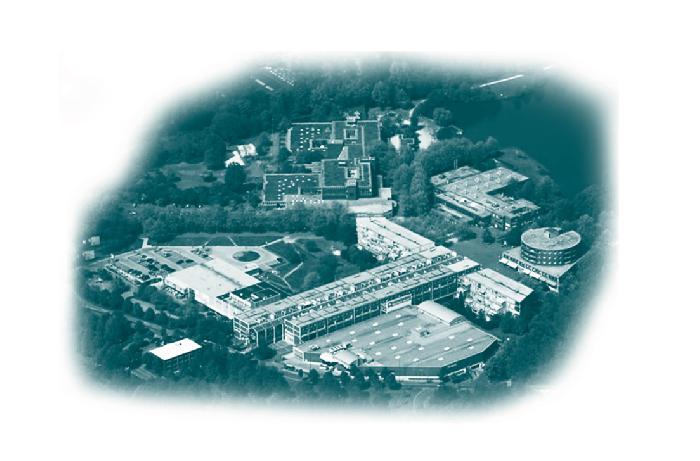
The idea to build a new town at the northern edge of the Ruhr Area for a large number of miners became actuality. It wasn't just necessary to create living space. Barkenberg is a a synonym fo how a whole town was planned and built. Residential, Transport, Infrastructure: all of the areas were filled with life within just a few years. The marks of quality were area protecting development, architectural diversity, connections between urbanity and closeness to nature, separation of pedestrians and traffic.
Almost 50 years have passed since then. Barkenberg has become a definite home for many people. They have a high quality of life and get involved in a lively community. Structural and residential economic problems, such as uninhabited parts and social pressures, which had arisen in a few of the settlements, have been being dealt with since 2006 within the framework of the national and local town-development programme "Bund-Länder-Programms Stadtumbau West". Hence, Barkenberg has the possibility of dealing with the problems which have arisen alongside the available and established urban development qualities.
Right from the beginning, Barkenberg was being talked about well outside its borders. That has continued right up to nowadays and even more so, due to the present town modifications. The town of Dorsten used this occasion to hold an exhibition, which took place from 10th to 23rd November 2008, about the history and development of the district of Wulfen-Barkenberg. Within this framework, the 31st of Dorsten's History Stations was set up on 23.11.2008, which was the final day of the exhibition and celebratorily officially presented.
(Translator's Note: The source given following the text that I have translated is "Pressetext der Stadt Dorsten / Joachim Thiehoff")
|
Translator: NOT Lyn 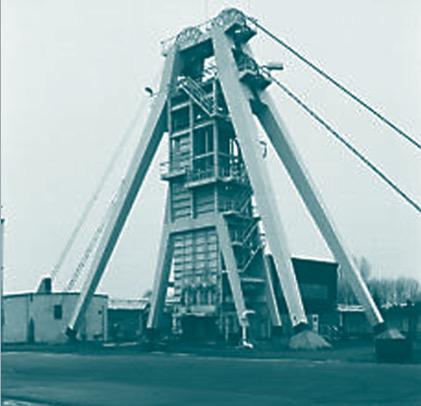 Headframe Shaft Wulfen 1 | _ |
1958 |
_ |
East of the village of Wulfen, the sinking work for the construction of the planned large shaft Wulfen 1/2 begins. A new residential area for more than 50,000 residents is being planned north of the B 58 for the long-term miners (up to 8,000) and their families who will be working here. |
|
Translation: NOT Lyn
| _ |
1960 |
_ |
The "Development Society Wulfen mbH" takes on the task of creating the "New Town of Wulfen" on a "green field" according to the principles of modern urban planning. |
|
TRanslation: NOT Lyn
| _ |
1961 |
_ |
Prof. Fritz Eggeling (Berlin) was awarded the contract for the overall planning of the new city as the winner of a national urban development ideas competition. Car and pedestrian traffic should be separated in it. Furthermore, flexible forms of living, new types of houses and flats with mandatory electric heating and a community antenna system are planned. |
|
The Federal Republic and Israel establish diplomatic relations. TRanslation: NOT Lyn | _ |
1965 |
_ |
Misguided from the field name "Backenberg", which probably goes back to Bockenberg = Buchenberg, from this time the name "Barkenberg" was used for the entire new settlement area. The first apartments are occupied in 1967. |
|
Translation: NOT Lyn 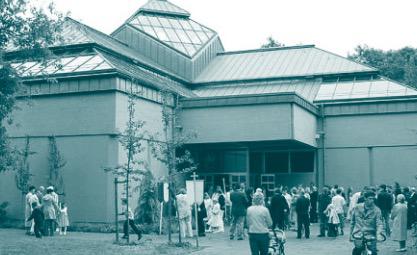 St. Barbara-Church | _ |
1972 |
_ |
The handover of the new evangelical community center will be followed next year by the inauguration of St. Barbara's Church |
|
TRanslation: NOT Lyn
| _ |
1973 |
_ |
Construction work on the “Metastadt” model project begins. This is a building complex made of steel girders with flexible wall structures with several shops and 102 apartments for around 400 residents. |
|
Dictatorship in Spain ends after General Franco's death. TRanslation: NOT Lyn 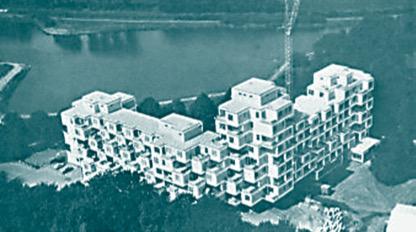 Metastadt | _ |
1975 |
_ |
Since the local pit fell well short of the high planning targets, the population target for the "New Town" was also reduced to 20,000. The Bishop of Münster elevated the Catholic parish of St. Barbara to an official and independent parish. By 1983, in the planned center of Barkenberg on Wulfener Markt, the comprehensive school, the community center with a leisure pool, a doctor’s and commercial building (“round building”) and a shopping arcade were built. |
|
TRanslation: NOT Lyn
| _ |
1986 |
_ |
This year the new connecting road "Marler Damm" between Barkenberg and Lippramsdorf - Kusenhorst will be released. |
|
TRanslation: NOT Lyn
| _ |
1987 |
_ |
Construction errors require demolition of the "Metacity" building. |
|
The artist couple Christo wraps the Reichstag building in Berlin. Translation: NOT Lyn | _ |
1995 |
_ |
At the end of the year, the population of Barkenberg reached its highest level at 12,466 people. |
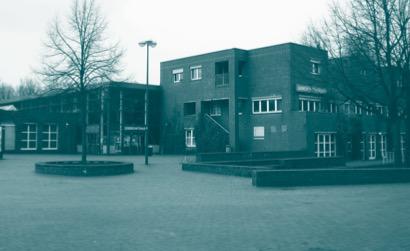 The community centre "Gemeinschaftshaus" Translation: Lyn |
2000 |
_ |
The coal mine "Zeche Wulfen", which was at the time the reason for building the "New Town" is closed and the shafts are filled in. | |
|
|
2007 |
_ |
Tower blocks with many stories containinf several hundred individual flats and social establishments (Primary school, Kindergarten) are demolished and rebuilt, within the framework of a publicly supported town development programme, that should continue until 2010; modernisation and restoration measures follow for retaining housing and in the surroundings . |
[zurück]
Daten und Fakten
Eröffnung - 23. November 2008
Adresse - The Market Plce "Wulfener Markt" - Community Centre "Gemeinschaftshaus"
Geodaten - N051°43'34
Celebratory Presentation on 23. November 2008

Opening Speech
The Mayor, Lambert Lütkenhorst, speaks, whilst it is sleeting, about the meaning of the History Station called Wulfen, Barkenberg.
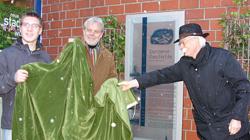
Unveiling of the History Plaque
The pupils, Robert Kolbe, from the History Club of the Petrinum, the Mayor, Mr Lütkenhorst and Rainer Deibschlag present the history plaque to the public.
Photos: Wulfen-Wiki.de C.Gruber 23.11.08

